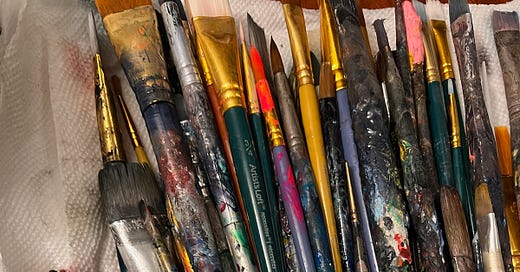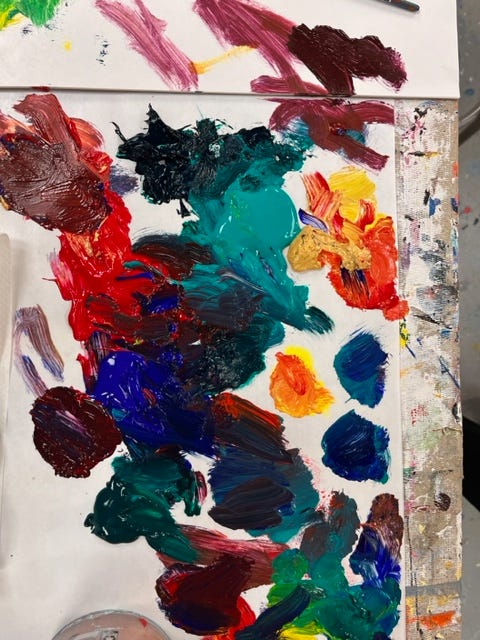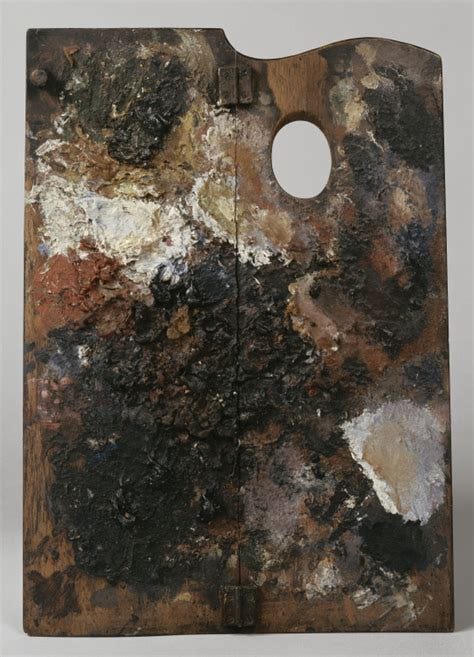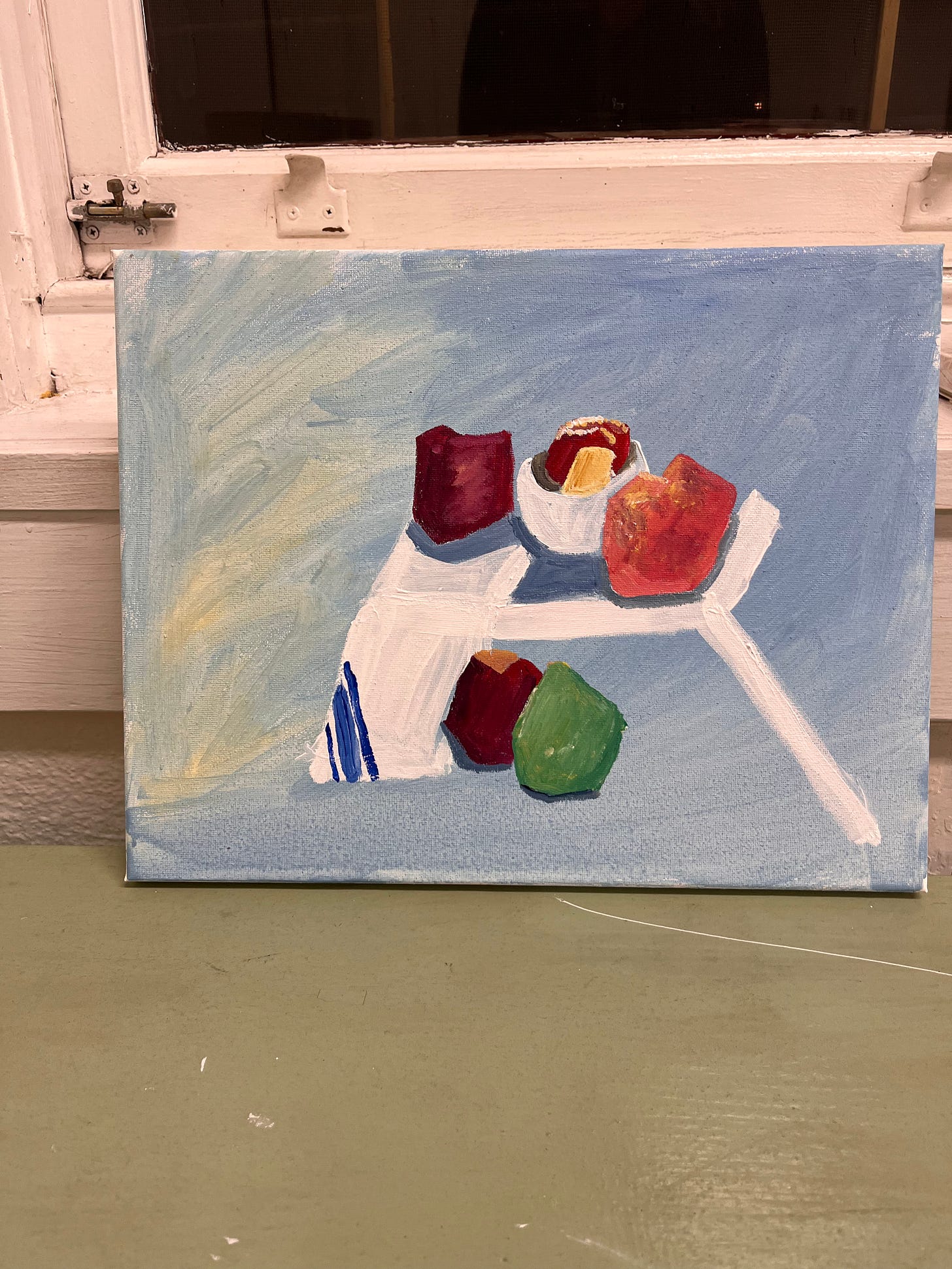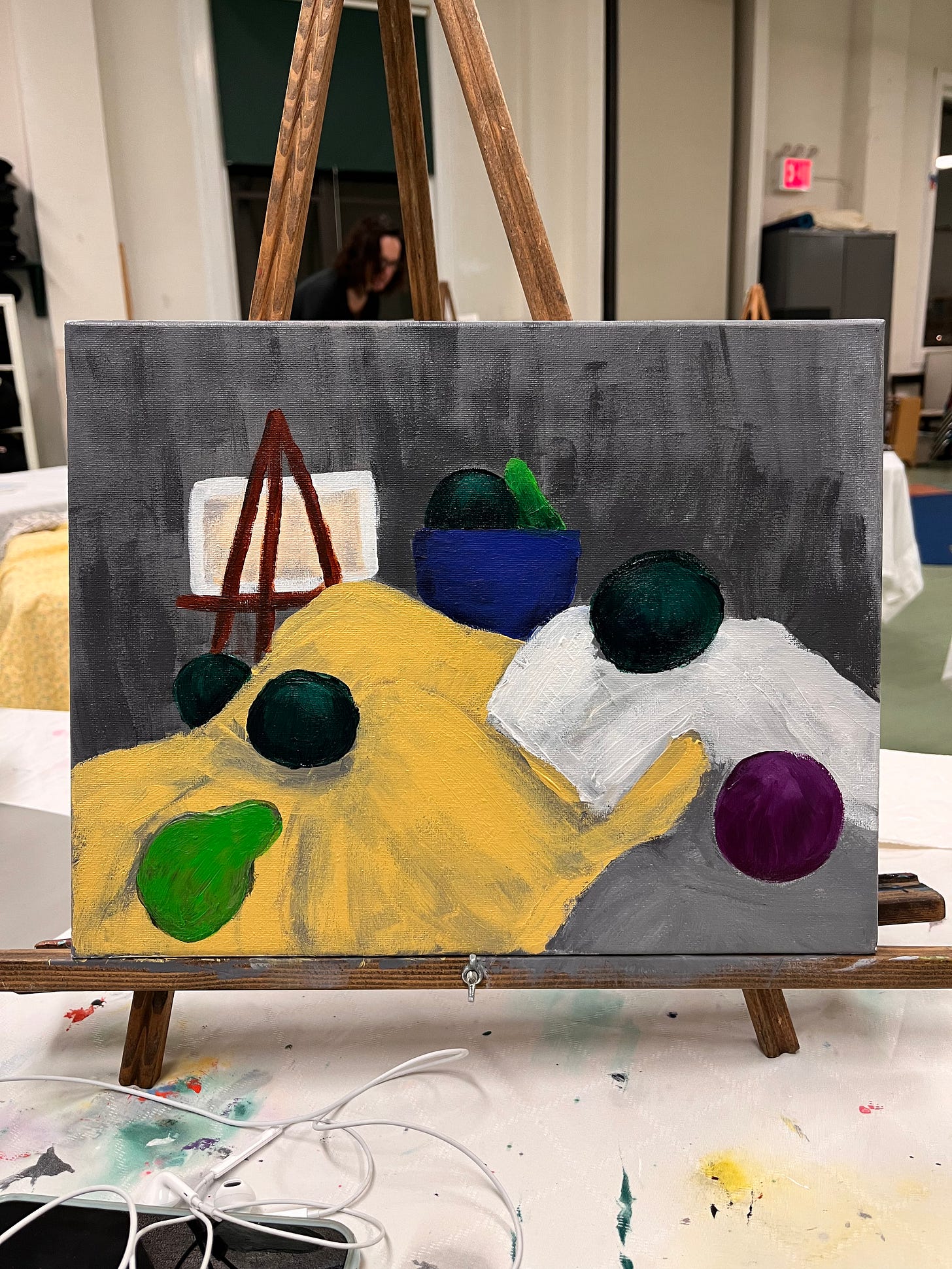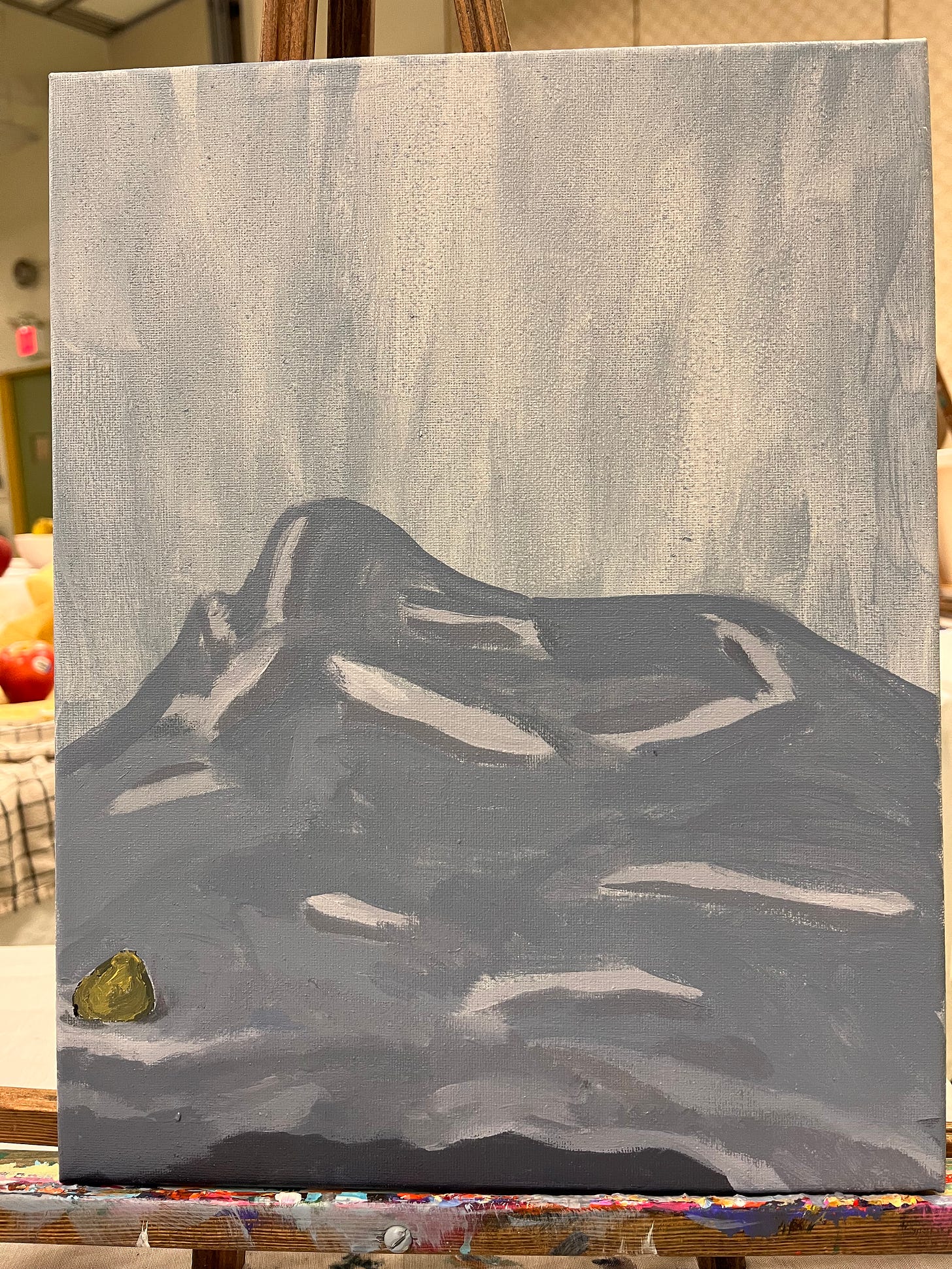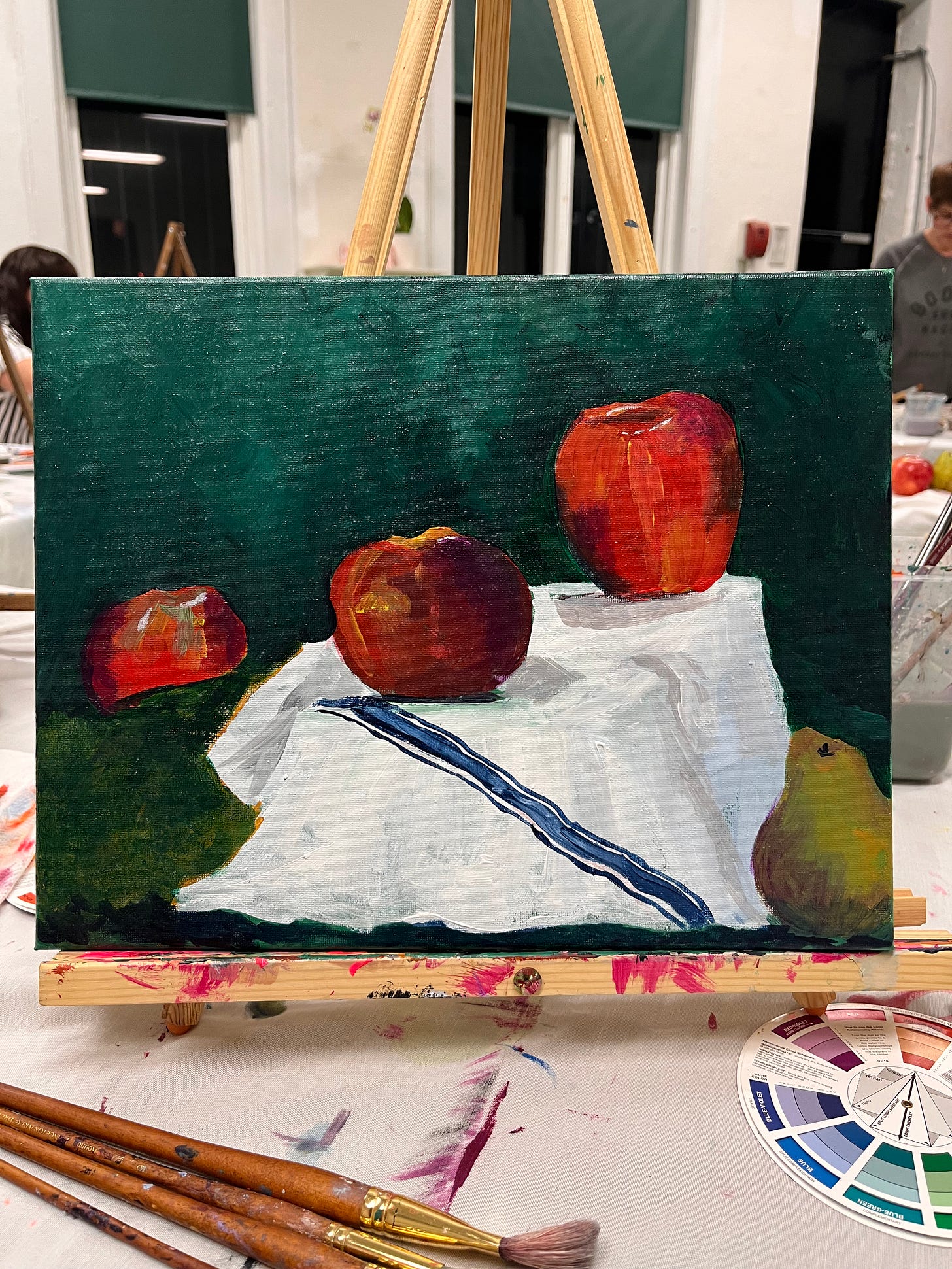In my recent brushstrokes class the students arrived at class to find a brush wrapped in a paper towel lying on the shelf of their easel. They couldn’t open that paper towel and reveal their assigned brush until everybody was seated and we were ready to paint.
There were a few groans as some of the people who had planned on painting a large section of their canvas opened up their paper towel and stared down at one of the tiniest possible round brushes.
But some cool things happened as a result of this change being forced upon them. A lot of the painters approached the painting in a new, more experimental and playful way. Other people found they loved the marks made with a fan brush. One person loved her first time applying paint with a palette knife. New types of brushstrokes were made.
This kind of experimentation is a great thing to do on the days when you either hate a painting you are working on, or you are staring at a blank canvas. And you can experiment in this way with any of your tools.
Palette of Paul Cézanne
Photo (C) RMN-Grand Palais (Musée d'Orsay) / image RMN-GP
Orsay Museum
Is your palette in a rut? I know that I repeatedly reach for my favorites like Prussian blue and quinacridone magenta, fluorescent pink and light green, without giving it much thought. And that lack of mindfulness and purpose in a painting isn’t always a great thing.
In a recent class on painting like Cezanne, I brought in some of that painting master’s favorite colors for us to experiment with.
After I added Cezanne favorites like Naples Yellow and Viridian Green to the palettes of the students, the end results were pretty amazing. Painters I have watched reach for the same colors for many years shocked me and impressed me with a brand new color scheme on their canvases. One painter repeatedly fills her canvases with bold, bright pinks, greens and blues. She used the Cezanne colors to create a more muted and emotional version of a work that still felt very much like her creation.
The rich grays and complicated blues and greens of Cezanne, and his luminous warm reds appeared, next to their more reliable fluorescent greens and bold purples.
WHO NEEDS A MUSE? How do you bring this experimentation idea to the canvas?
You could experiment with your palette in any number of ways. Next time you go to the art store, pick out a color that you would never, ever normally select and cover half of your canvas with it. And then force yourself to deal with that glaring bit of color that you might possibly hate.
Or, tell yourself that you can only use one tiny bit of your favorite color and the rest has to be Cezanne gray. Or put a warm color everywhere you would normally drop a cool color. Basically, if you remember the Seinfeld episode, you’re going to be “Bizarro” and do the opposite of every impulse you have.
Try the brush experiment in the same way. Buy a giant brush at Home Depot and then the tiniest brush at Artist and Craftsmen.
Experiment with the size of you canvas. Then try a new shape canvas or maybe paint on a canvas that has been gessoed black.
And, obviously, you could go down the experimentation rabbit hole with subject matter as well. You lean into landscapes? Build a still life. You do portraits? What about a seascape today.
Experimentation can fuel so many discoveries and that is what we’re here to do.

